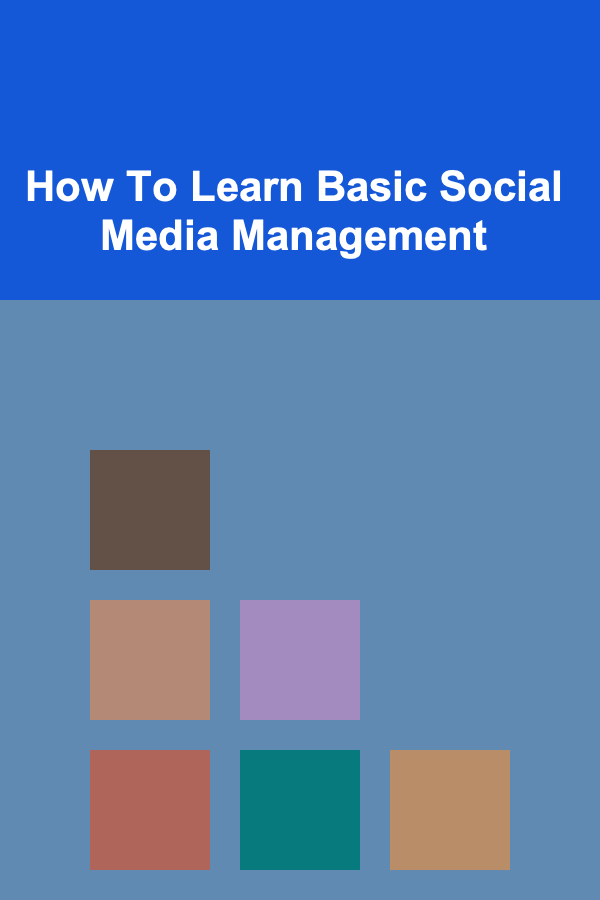
How to Quilt with Scraps: A Beginner's Guide
ebook include PDF & Audio bundle (Micro Guide)
$12.99$10.99
Limited Time Offer! Order within the next:
Not available at this time

Quilting with scraps is a creative and sustainable way to make beautiful quilts while reducing waste. It allows quilters to use leftover fabric from other projects, repurpose old clothes, or even incorporate sentimental fabrics. Quilting with scraps doesn't just save money; it also opens up a world of creative possibilities. Whether you're a seasoned quilter or a complete beginner, this guide will walk you through the basics of scrap quilting, offering tips, techniques, and inspiration to help you get started.
Why Quilt with Scraps?
Scrap quilting is an excellent way to breathe new life into leftover fabrics. Instead of discarding pieces of fabric from previous projects, quilters can creatively combine them into new and exciting designs. Here are a few reasons to quilt with scraps:
- Sustainability: It's an eco-friendly way to use up fabric remnants instead of sending them to a landfill.
- Cost-Effective: Scrap quilting reduces the need to purchase new fabric for each project, making it an affordable way to create beautiful quilts.
- Creative Freedom: Working with scraps opens up endless possibilities for unique color combinations and design ideas.
- Personalized Quilts: Using sentimental or meaningful fabrics, such as old clothes, can make your quilt even more special.
In the following sections, we'll explore how to get started with scrap quilting, what tools you need, and how to create your first scrap quilt.
Step 1: Gather Your Scraps
The first step in scrap quilting is gathering your fabric scraps. Fabric scraps can come from a variety of sources:
- Leftover fabric from other quilting projects.
- Old clothes, bed linens, or tablecloths.
- Fabric swatches or remnants from fabric stores.
- Charity shops or second-hand stores, where you can repurpose fabric from old garments.
When collecting scraps, you can organize them by color, size, or type of fabric. Some quilters prefer to work with similar fabric types (e.g., cotton, linen), while others mix and match various textures to create a unique look.
Size Matters
Before you start cutting, it's helpful to sort your scraps by size. Larger scraps can be used for bigger quilt blocks, while smaller scraps can be reserved for smaller pieces like cornerstones or appliqué details. If you have a lot of tiny scraps, consider using them for projects like scrap baskets, pin cushions, or mini quilts.
Choosing Colors
Scrap quilting often involves working with a wide variety of colors, which can be both exciting and overwhelming. To create harmony in your quilt, it's important to have a general color palette in mind. A good rule of thumb is to choose a dominant color and then add complementary colors or patterns to balance the design. Alternatively, you can embrace the chaos and go for a random, multicolor quilt!
Step 2: Choose Your Quilt Design
Once you've gathered your scraps, the next step is to choose a quilt design. Fortunately, scrap quilts can be as simple or as complex as you like. Here are a few popular quilt designs that work well with scraps:
1. Nine-Patch Quilt
The nine-patch quilt is one of the most basic quilt blocks and is perfect for beginners. It consists of nine squares arranged in a 3x3 grid. You can mix and match different fabrics for each square, creating a patchwork design that looks great with scraps.
2. Log Cabin Quilt
The log cabin design is another great option for scrap quilting. This pattern consists of a central square surrounded by strips of fabric. You can use different colored strips to create a scrappy, patchwork effect that radiates from the center.
3. Flying Geese
Flying geese blocks are shaped like triangles and can be arranged in various configurations to form a dynamic quilt design. This pattern is perfect for using up smaller scraps of fabric and creating a quilt with movement and visual interest.
4. Disappearing Four-Patch
The disappearing four-patch quilt starts with four patches sewn together in a simple 2x2 block. After the block is made, it's cut into smaller pieces and rearranged to create a more complex design. This is a great way to use scraps while adding some creative flair to your quilt.
5. Churn Dash
The churn dash block is a classic quilting design that looks stunning when made with scraps. The block consists of a combination of squares and half-square triangles, creating a simple but charming design.
If you're feeling more adventurous, there are endless possibilities for creating more intricate designs, such as star patterns, applique, and scrap quilts that mix different shapes and sizes.
Step 3: Plan Your Layout
Before you start sewing, it's important to plan your quilt's layout. Lay out your pieces on a large, flat surface or a design wall to visualize the arrangement of your scraps. Here are a few tips for planning your layout:
- Balance the colors: When placing your fabric pieces, be mindful of how colors are distributed across the quilt. Avoid grouping too many similar colors together, as this can create an unbalanced or flat design.
- Use contrast: To make your quilt more visually dynamic, mix light and dark fabrics to create contrast. This will help the individual blocks or pieces stand out.
- Be mindful of patterns: If you're using scraps with busy patterns, try to balance them with solid or simpler fabrics to avoid overwhelming the eye.
- Use a design wall: A design wall is a fantastic tool for quilt planning. It allows you to arrange and rearrange your blocks without them falling apart, helping you visualize the overall design.
Step 4: Cut Your Scraps
Once you've planned your quilt layout, it's time to start cutting your fabric. The way you cut your scraps will depend on the quilt design you've chosen. If you're following a specific pattern, it's essential to carefully measure and cut each piece to the required size.
Cutting Tools
- Rotary cutter and cutting mat: A rotary cutter is the most efficient tool for cutting fabric scraps into uniform pieces. A cutting mat provides a safe and stable surface for cutting.
- Quilt ruler: A quilt ruler helps you measure and cut accurate pieces. It also ensures that your edges are straight, which is crucial for achieving even seams.
- Scissors: For smaller, more intricate cuts, a pair of sharp fabric scissors can be helpful, especially when working with tiny scraps or applique pieces.
Cutting Tips
- Use a fabric stabilizer: If your scraps are from old clothing or other non-quilting fabric, consider using a fabric stabilizer to prevent fraying and make the fabric easier to cut and sew.
- Trim uneven edges: Before cutting your scraps, trim off any uneven or frayed edges to ensure that your pieces are straight and neat.
Step 5: Start Sewing
With your scraps cut and your layout ready, it's time to start sewing! The key to successful scrap quilting is sewing with precision, so take your time and focus on the details. Follow the pattern or design you've chosen, and make sure to maintain consistent seam allowances.
Pressing the Seams
Pressing your seams is an important step in the quilting process. Proper pressing helps to flatten the fabric, reducing bulk and ensuring that your quilt blocks stay neat and uniform. Press each seam carefully with an iron, pressing the fabric in the direction indicated by your pattern (usually towards the darker fabric or away from the center of the block).
Joining the Blocks
As you sew the individual blocks together, be sure to match the seams carefully to ensure that your quilt top comes together evenly. Use pins or clips to hold the fabric pieces in place as you sew, and take your time to achieve precise stitching.
Step 6: Assemble Your Quilt Top
Once all your quilt blocks are complete, it's time to assemble them into a quilt top. Lay out your blocks according to your design plan, making sure everything is aligned properly. Use a consistent seam allowance when joining the blocks together, and take care to line up the edges as accurately as possible.
Step 7: Add the Backing, Batting, and Quilting
Now that your quilt top is assembled, it's time to add the backing and batting and begin the quilting process. The backing is the fabric that will form the back of your quilt, and the batting is the middle layer that gives your quilt its thickness and warmth.
- Cut the backing fabric to the same size as your quilt top, adding a few extra inches on all sides.
- Layer the quilt top, batting, and backing together. Smooth out any wrinkles and pin or baste the layers in place.
- Quilt your layers together by sewing through all three layers. You can quilt by hand or machine, depending on your preference and skill level.
Step 8: Bind the Quilt
The final step is to add the quilt binding. Binding is the fabric trim that goes around the edges of the quilt to give it a finished look and protect the raw edges.
- Cut strips of fabric to create the binding. You'll need enough strips to go around the entire perimeter of the quilt.
- Attach the binding by sewing it to the quilt edges, folding it over to the back, and hand-stitching it in place.
Conclusion
Quilting with scraps is a wonderful way to create unique, one-of-a-kind quilts while minimizing waste. Whether you're using old clothes, leftover fabric, or scraps from previous quilting projects, scrap quilting gives you the opportunity to be creative and resourceful. With the right tools, some basic techniques, and a little bit of patience, you can create beautiful quilts that tell a story, celebrate your creativity, and bring warmth to your home. So gather your scraps, choose a design, and start quilting today!

How to Renovate Your Home to Improve Indoor Air Quality
Read More
How to Sell Handmade Baby Clothes on Etsy: An Actionable Guide
Read More
What Should You Know About Organizing Your Makeup Collection?
Read More
How To Learn Basic Social Media Management
Read More
Understanding Annuities: A Comprehensive Guide
Read More
10 Tips for Training Your Team Using a Customer Service Planner
Read MoreOther Products

How to Renovate Your Home to Improve Indoor Air Quality
Read More
How to Sell Handmade Baby Clothes on Etsy: An Actionable Guide
Read More
What Should You Know About Organizing Your Makeup Collection?
Read More
How To Learn Basic Social Media Management
Read More
Understanding Annuities: A Comprehensive Guide
Read More